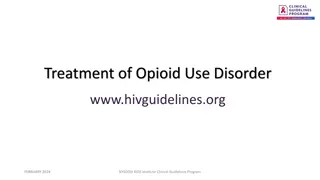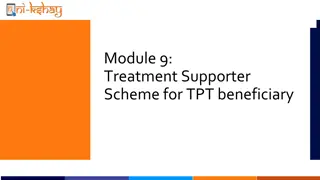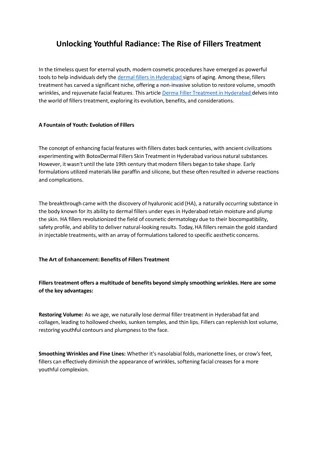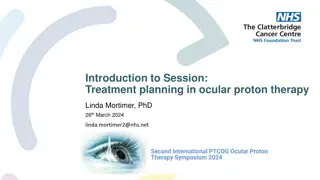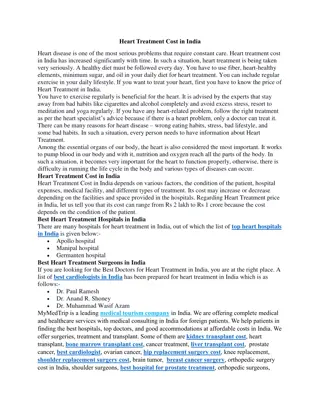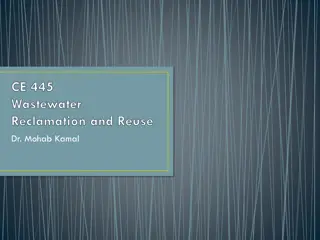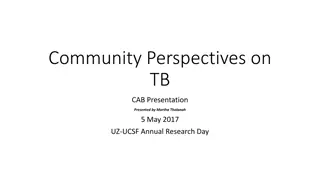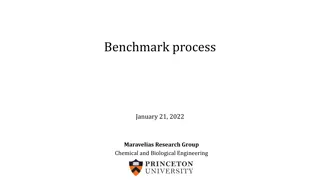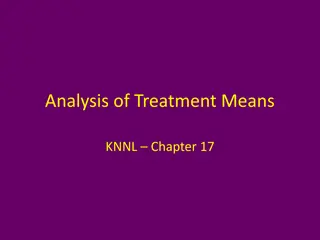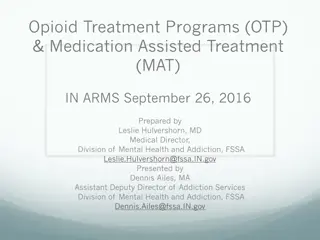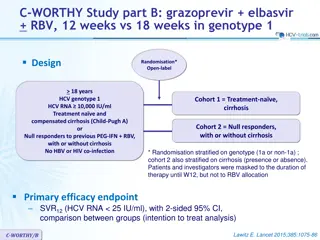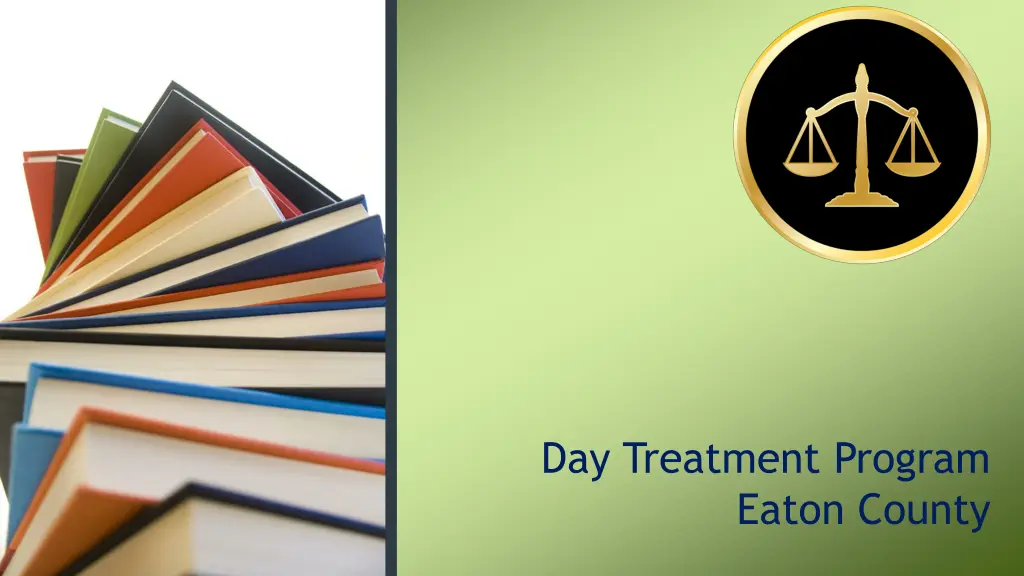
Legal Basis and Dispositional Requirements in Eaton County Day Treatment Program
Explore the legal framework and court-mandated dispositions guiding the Day Treatment Program in Eaton County, Michigan. Learn about the significance of a least restrictive environment, risk needs assessments, and ensuring the welfare of juveniles and society, as outlined by MCL statutes.
Uploaded on | 0 Views
Download Presentation

Please find below an Image/Link to download the presentation.
The content on the website is provided AS IS for your information and personal use only. It may not be sold, licensed, or shared on other websites without obtaining consent from the author. If you encounter any issues during the download, it is possible that the publisher has removed the file from their server.
You are allowed to download the files provided on this website for personal or commercial use, subject to the condition that they are used lawfully. All files are the property of their respective owners.
The content on the website is provided AS IS for your information and personal use only. It may not be sold, licensed, or shared on other websites without obtaining consent from the author.
E N D
Presentation Transcript
Day Treatment Program Eaton County
Presenters: Honorable Amanda G. Pollard Presiding Judge 56thProbate and Family Court Eaton County, MI Jeremy Mulvany Director Eaton County Youth Facility Eaton County, MI Kellie Ward Probation Officer Eaton County Juvenile Court Day Treatment Program
MCL 712a.1(3) This chapter shall be liberally construed so that each juvenile coming within the court's jurisdiction receives the care, guidance, and control, preferably in his or her own home, conducive to the juvenile's welfare and the best interest of the state. Legal Basis for Day Treatment Programs
MCL 712a.(1)(j) "Least restrictive environment" means a supervised community placement, preferably a placement with the juvenile's parent, guardian, relative, or a facility or conditions of treatment that is a residential or institutional placement only utilized as a last resort based on the best interest of the juvenile or for reasons of public safety. Legal Basis for Day Treatment Programs
MCL 712a.18(1) The court must return the minor home unless doing so would cause harm to the juvenile and society. The court may enter dispositional orders that are appropriate for the welfare of the juvenile and society in view of the facts proven and ascertained . Legal Basis: Disposition
MCL 712a.18(9) Risk Needs Assessment: (b) The results of the risk and needs assessment must be used to inform a dispositional recommendation and consider: (i) The least restrictive setting possible. (ii) Public safety. (iii) Victim interests. (iv) Rehabilitation of the juvenile. (v) Improved juvenile outcomes, including, but not limited to, educational advancement. Legal Basis: Disposition MCL 712a.18(10): The court shall consider the results of the risk and needs assessment conducted under subsection (9) when making a dispositional decision regarding a juvenile found within this chapter, including, but not limited to, any of the following decisions: (a) Whether to place a juvenile under supervision, including the length, level, and conditions of this supervision. (b) Whether to place a juvenile on probation. (c) Whether to place a juvenile in out-of-home care.
MCL 400.117 Social Welfare Act Child Care Fund Statutes 75% reimbursement for community-based services including direct and indirect costs as outlined in (4)(b)(iii) Salaries, benefits, mileage, supplies, program materials, drug screens, tethers, cell phones for employees, educational costs, contracts and contracted individuals, certain assessments, incentives, etc. Financial Basis for Day Treatment Under 13 Counties must comply with requirements for risk/needs assessments and screenings, mental health screenings, quality assurance compliance, and best practices
Historical Context of Day Treatment in Eaton County How did we get here?
Basic Philosophies Least Restrictive Placement Incentivize Everything Don t Let the File Scare You Work w/ the youth, not the file
ADVICE If you re considering it, do it. Go visit several sites. Build relationships with local school districts. Did I mention incentivize??? Have a P.O. specific to the program. Push school, GED, Employment, Career Paths, etc. BE FLEXIBLE! Be creative but SET THE BAR HIGH.
ADVICE Cont. Lean heavily on therapeutic interventions. Provide all transportation! Hold parents accountable (show cause if necessary). If someone must be the bad guy with parent(s), make it the administrator or P.O., not the therapist or program staff.
Day Treatment is an academically driven program where youth EARN days towards a 75 earned day treatment track followed by aftercare probation. Day Treatment is more restrictive than Community Based Probation, however less restrictive than Detention and Residential Treatment Programs. Day Treatment youth attend the program Monday- Friday and are transported to and from program from their residence by program staff. Youth in the Day Treatment Program receive age/grade level appropriate academics, guidance from appointed staff advocates, probationary services and therapeutic services while attending the program Community service providers established both prior and during a youth s Day Treatment track are also welcome to meet with the youth in the Day Treatment Program What is Day Treatment?
Day Treatment eligibility Adjudicated youth, ages 12-17; Typically, these youth have been unsuccessful on Consent Calendar and Community Based Probation programs Youth who are truant, have substance use concerns, are without an accredited learning program for behavioral issues (suspension, expulsion), youth who are credit deficient, youth that may benefit from in-house services Youth that are ordered into the program are ordered by the Court to be staffed by the Treatment Team of the Day Treatment Program. This team consists typically of the program probation officer, program therapists (mental health and substance use), deputy director and directors of the youth facility to discuss appropriateness Referring caseworker will provide background information to the treatment team to determine eligibility. Program referral packets include information regarding youth s academic standing, disciplinary behavior, medical and psychiatric diagnoses and probation interventions. Youth who reside in the County (Eaton) Discretion is used by the Treatment Team for offenses that are violent and/or assaultive in nature.
Day Treatment Program Components: In-House Program Individual Therapy Aftercare Program Re-Integrate youth into the Community/School Setting Group Therapy Therapy as needed Substance Use Therapy Referral for community services/supports as needed (academic, social, financial) Academics (can be credit recovery) Life Skills Community Service Recreation Parent/Family Staffing/Orientation Family Therapy
Ideally, Youth in Day Treatment will develop: Enhanced decision- making and problem- solving skills Increased positive participation in the community Coping and emotion- management skills Healthy self-esteem, respect and accountability towards self and others and positive relationships Strengthened family relations and improved family cohesion
In-House Program specifics: 75 Earned days, approximately 3 months long if youth earns their days. Some students require more time to be successful in the program. Barriers to earning days include inconsistent or lack of attendance, substance use, behavioral issues Treatment groups-facilitated by mental health therapist(s), substance use therapist(s) and program staff Contracted with local school district to provide academics, both in-person and online options available. Each youth s transcript is reviewed prior to placement into courses that will benefit the youth, if credit recovery is a goal. Individual therapy Family therapy: At least one legal parent/guardian required to participate at least once a week
Aftercare Program: Typically, 45-90 earned days, with one month suspended for good behavior Designed to address any transitional needs. Youth should already be re- enrolled at home school or enrolled in school agreed upon prior to successful completion of track Youth demonstrates newly acquired skills, probation officer monitors youth and watches for reverting back to previous attitudes and behaviors both in the community and at home. Court hearing scheduled if transition not tolerated to consider options, discretion to close by monitoring probation officer when aftercare time period close to expiration
Community Service: Days without scheduled schooling, i.e. professional development days for teaching staff, extended holiday breaks, and other days chosen by the Director and Deputy Director are Community Service Days Youth who missed the Day Treatment transportation during the week would be required to attend Youth who didn t earn their days during the week are required Youth who are not required, can volunteer to earn an extra jump day towards their track
How do youth earn their days? Day Treatment is a level based program. Each level has points that must be earned daily in order to earn days. The levels are as follows: Orientation Level Days 1-10 1. Level 1 Days 11-25 2. Level 2 Days 26-40 3. Level 3 Days 41-55 4. Level 4 Days 56-75 5. Aftercare 6.
Level breakdown: Orientation (1-10) Home Detention with GPS tether monitored by probation officer Can only leave if needed with parent/guardian Level 2 (26-40) Allowed to leave home with parents permission and age appropriate curfew Youth may obtain employment Have friends over with parent permission Able to participate in outings, purchase things for level 2 items in store GPS tether discretion Each level requires a youth earn a set amount of points. As levels increase, so do the amount of points that need to be earned for each level. Youth are expected to set an example for newer youth in the program as the levels increase. Level 1 (11-25) Allowed to leave home with parent for up to 2 hours GPS tether at discretion of probation officer Able to participate in outings Level 3 (41-55) Curfew increases by half hour Earn extra time on curfew for Saturday and Sunday if earn all days that week Youth may obtain employment Have friends over with parent permission Purchasing privileges at program store Husky party GPS tether discretion Level 4 (56-75) Curfew increases by 1 hour Earn extra time on curfew for attendance May obtain employment Have friends over with parent permission Program purchasing privileges, discount on items Leave the classroom to utilize kitchen, other areas without permission GPS tether discretion
Academics: Assigned seats in class At the end of trimester, if passing classes will earn 2 jump days for each A , 1 jump day for each B Expected to turn in homework by due dates At the end of trimester, if failing grade 50-59% 2 day drop, 40-49% 3 day drop, 30-39% 4 day drop, Below 30% 5 day drop All supplies provided so that nothing is transported during route Excused days only with written doctor s note All credits issued by contracted school and will transfer to home school
Medications: Screens: Drug and Alcohol Able to be dispensed with parent permission Required to submit screen each Monday by noon of program Must be in original bottles If absent on Monday, required first day back in attendance Log kept for over the counter medications Failure or refusal, is presumptive positive New use results in 5 day demotion and freeze on days until negative sample If substances an issue, referral for substance use assessment and treatment plan
Earning Points = Earning Days Points are earned for positive involvement in the program. Staff keep track of point sheets for appropriate behaviors; Points are tracked on five skill areas for each day Area/Dress/Manners: being prepared for school beginning of day, following dress code 1. Talk: appropriate conversations, not discussing other youth, accepting directives, being considerate 2. Gestures: nodding at someone s inappropriate behavior, sitting up and not lying down in class 3. Cooperation: following directions, encouraging others 4. Ignore: Ignore attention seeking behaviors from others 5. Each youth given personalized weekly program goal Coupons used by staff to reward appropriate behavior during the day and can be used to purchase items from the program store when on appropriate level to do so
Incentives: Coupons to be used within the program Privilege Lunch Amazon Gift Cards Outings with staff Community Service Days Off Employment Aftercare-remain in program Jump Days
Reflect and Refocus (R&R) Issued for a variety of reasons, prevent from earning points and/or earning a day Removal from Group Peer contact outside of program House arrest violation Incomplete homework Curfew violation Unexcused absence Paraphernalia Property Damage Threatening behavior Dishonesty and manipulation Physical Contact/Fighting Disrespect to Staff or Peer
R&R Scenarios/Frozen Days: A youth is on Day 37 on Monday and earns their day. Youth misses Tuesday with no excuse. Youth is issued an R&R for absence. Youth attends Wednesday and makes up the R&R day by earning the day. On Thursday, youth would be starting their day 38. R&R days can stack, up until 3 days, then will start to lose days in program that they ve accumulated. A youth who tests positive on a drug screen for an illegal substance would drop in program 5 days and then frozen until a negative drug screen is produced. It should be noted that when a youth first starts the program and admit to being positive for substances, will get a confirmation level from lab. If youth's levels continue to decline for substance, will earn their days. If levels go up to indicate new use, youth frozen in days.
Barriers for not earning days: Substance Use Truancy Behavioral issues


